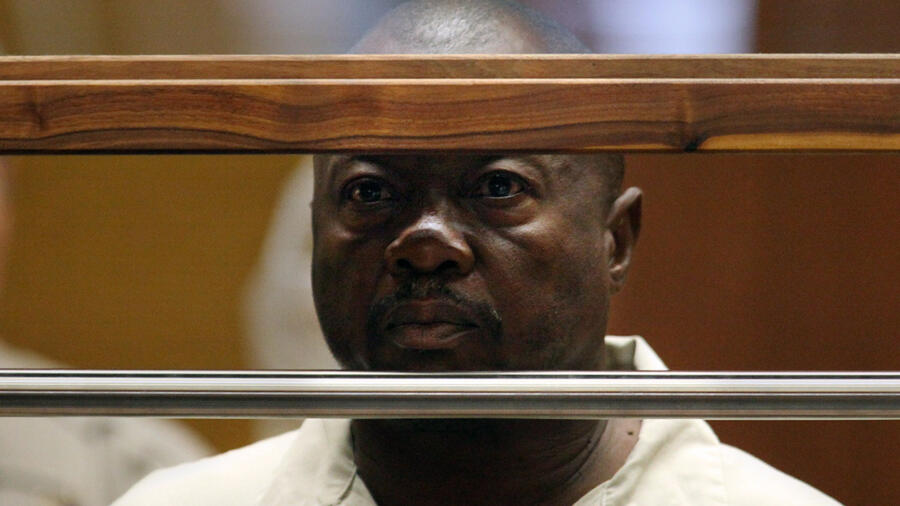They were daughters, mothers, and sisters. For decades, the world dismissed their lives and ignored their deaths. Why? Because a serial killer—Lonnie David Franklin Jr., later named the Grim Sleeper—targeted the invisible, the vulnerable, and the unheard.
From 1985 to 2007, Franklin murdered with terrifying consistency. However, he chose victims from communities most often overlooked by law enforcement and the media. As a result, many of their stories remained buried for years. Today, we rewrite that wrong.
These women mattered. Their lives mattered. Now, their voices return.
They Had Names. They Had Dreams.
Franklin’s first confirmed victim, Debra Jackson, died in 1985. Over the next few years, authorities discovered several more women—each brutally murdered, discarded in alleys or dumpsters.
These ten women became his known victims:
- Debra Jackson, 29
- Henrietta Wright, 35
- Barbara Ware, 23
- Bernita Sparks, 26
- Mary Lowe, 26
- Lachrica Jefferson, 22
- Alicia “Monique” Alexander, 18
- Valerie McCorvey, 35
- Princess Berthomieux, 15
- Janecia Peters, 25
Each one had a story. Moreover, each one had potential—potential that Franklin deliberately snuffed out.
Princess Berthomieux: A Child the System Betrayed
Among the ten, Princess Berthomieux stood out for her youth. Although she had endured horrific abuse as a toddler, her placement in a loving foster home gave her a second chance. She thrived in private school, received therapy, and began to heal.
Then tragedy struck again. After her foster mother passed away, the system relocated Princess to South Central L.A.—right into Franklin’s killing zone.
“She had come so far,” said her sister Samara Herard. “But they took everything she gained and threw her back into chaos.”
Sadly, Princess ran away. Not long after, Franklin murdered her.
The Misleading Myth of a “Hiatus”
The media labeled Franklin the “Grim Sleeper” because his known killings appeared to pause from 1988 to 2002. However, experts strongly disagree with that label.
“Serial killers don’t simply stop,” explained forensic psychologist Dr. Joni Johnston. “They either adapt, become more cautious, or pick victims no one will miss.”
Indeed, Franklin likely continued to kill—just more strategically. He may have chosen women who lacked family support or permanent housing, making them less likely to be reported missing.
Therefore, this so-called “hiatus” was a myth. It represented not his pause, but society’s neglect.
DNA, Family, and a Breakthrough Decades Later
By 2009, the case remained cold—until a DNA breakthrough changed everything. When police arrested Franklin’s son on an unrelated charge, his DNA triggered a familial match in the system. This discovery led detectives to Franklin himself.
After his arrest, investigators searched his home and found:
- Over 1,000 photographs of women, many unconscious
- Dozens of keepsakes and trophies, likely taken from victims
- Unmistakable links to several unsolved murders
Furthermore, many of the women in the photos remain unidentified. Their fates, to this day, remain a mystery.
The Conviction That Came Too Late
Franklin finally stood trial in 2016. Prosecutors convicted him of murdering ten women, including Princess. Although he received the death penalty, he died of natural causes in 2020—before the justice system could carry out the sentence.
For many families, that felt like another injustice.
“If someone had listened back then,” said Samara, “Princess might still be alive today.”
Why Were These Women Ignored for So Long?
The answer is brutally honest: race, poverty, and prejudice. Most of Franklin’s victims were Black women from underserved communities, some struggling with addiction or homelessness.
As a result, authorities often dismissed their cases, labeling them as overdoses or isolated crimes. The media offered little to no coverage. Consequently, the killer continued without pressure or scrutiny.
This wasn’t just a failure of police work. It was a failure of moral obligation.
How Many More Victims Remain Unknown?
When police searched Franklin’s home, they found an overwhelming amount of evidence—far more than needed to convict him. Hundreds of photos, documents, and belongings suggested Franklin’s kill count exceeded ten.
Tragically, many of the women had no records, no reports, no names.
So, the question lingers:
How many did he really kill? How many did we overlook?
FAQs: What You Need to Know
Who was the Grim Sleeper?
Lonnie David Franklin Jr., a serial killer who targeted vulnerable women in Los Angeles from 1985 to 2007.
How many victims did he kill?
He was convicted of 10 murders, but investigators believe he may have killed 25 to 50 more.
Why was there a 14-year gap?
There likely wasn’t. Franklin probably continued killing victims who weren’t missed or reported.
How was he caught?
A DNA sample from his son created a familial match that led investigators to Franklin.
Did he face the death penalty?
Yes, he received a death sentence in 2016 but died in 2020 of natural causes before execution.
Why were his victims ignored?
Systemic racism, socioeconomic bias, and institutional indifference allowed the case to go cold for decades.

